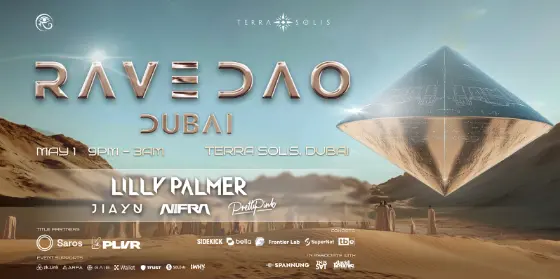Exploring "Progressive Decentralization": A Three-Stage Analysis of How to Create a Successful DAO
Original Author: Vic Kalchev, BanklessDAO
Original Translation: The Way of the Metaverse
The DAO to the Future
Frankly, DAOs are the future of organizations. The elements of DAOs (Decentralized Autonomous Organizations) have existed for a long time, but they have finally come together to form something greater than the sum of their parts.
COVID has prompted us to discover what many technologists have known for a while—distributed teams can work effectively. Companies like Compound, Gitcoin, and others have shown us that merging these teams with communities and allowing them to make decisions is also feasible.
So, does this mean every startup should create a DAO?

Not exactly.
First, not every business is suited to establish a DAO (for example, your sock shop on Shopify). Even if it is suitable, there is quite a bit of work to do before the first on-chain vote.
A DAO is a community. The community forms a shared vision and establishes a mission for how to make that vision a reality. Hector Espinal built We Run Uptown around a common mission: "To create a network that uplifts and inspires runners in New York City to be their best while having fun in the process."
But that’s not why he got his neighbors in Washington Heights to run with him. Instead, he simply posted on Facebook: "Meet at 168th Street and Broadway. We’re going to run on the bridge."
Those who joined Hector’s group knew exactly what they were doing (running) and who they were doing it with (neighbors). As for why, everyone had their personal reasons, but the shared vision was definitely fitness.
The same goes for DAOs. You cannot start until you understand the project’s content, how it works, why it matters, and whether others care about these ideas too.
In addition to community awareness, DAOs also require governance and incentives. While the community will build these, you need to set up the scaffolding. The governance and incentive structures will carry your blueprint vision, outline the overall direction of the DAO, and ultimately become the main reason people join.
So, if not on day one, when should you start building a DAO? a16z venture capitalist Jesse Walden provides some answers:
Progressive Decentralization
Walden believes that cryptocurrency startups should decentralize gradually:
"……Many of the things needed to build a successful product from the start—product leadership, rapid iteration, and managed go-to-market—make the path to community ownership and regulatory compliance complicated, but they ensure long-term health."
Building a community around an untested idea will distract people from the most critical task: testing the idea. To avoid this misstep, Walden suggests going through three phases:
Discover product-market fit
Build an active community
Transition to community ownership

The Journey to a Complete DAO
Discover Product-Market Fit
Things move quickly, and directions change rapidly. You are working in sprint mode: defining problems, drafting solutions, and testing. A core team can adjust and iterate until your product fits the market.
Focus and rapid iteration are crucial. To optimize speed, you need to stay small and agile. Walden states that decentralization should not be considered at this stage.
Community Engagement
At this point, you have found your market and are solving a real problem for a large group of people. Your product is still in rough draft form, but customers are constantly making requests. Some even proactively suggest feature requests. This is when you start building a community.
Even if a DAO is not in your plans, a community is a good idea for two main reasons:
Gain customer insights to help you refine your product.
Increase customer stickiness. For consumers, it’s easier to stop using a product they don’t feel emotionally connected to through the community.
In Web2, businesses build communities to extract value from them. For example, Coda—the document application I used to write this article—has a vibrant online workspace where people share templates, develop workflows, and exchange experiences. While members benefit from these interactions, the largest portion of the value accrues to Coda. It can mine use cases, feedback, and ideas from the forum. In return, users can pay for the products they help develop.
If this seems exploitative, it indeed is—even if the community is voluntary. But it doesn’t have to be this way.

In Web2, companies and communities are two separate groups. In Web3, they can become one.
If Coda decided to take the DAO route, it could:
Enable community members to propose suggestions for product development.
Establish governance and incentive structures at the community level.
Give back value by compensating members for their contributions (such as template creation and workflow development).
Introduce tokens to facilitate value transfer among community members.
Community Ownership
All the efforts from the first two phases culminate at this stage. The founding team hands over complete control to the community. Token holders will now make all decisions regarding the organization’s future.
The biggest challenge in the leap from a supportive but non-interfering community to an actionable DAO is governance and incentives. No matter how much work you did in the previous phase, the community will reinforce the governance structure, establish processes and procedures that allow the DAO to manage all aspects of the business.
In addition to day-to-day operations, there are challenges in managing existing shareholders, employees, taxes, and company formation. Most states and countries do not recognize DAOs as legal entities. Will you register the DAO as a Limited Liability Company (LLC) or incorporate in Wyoming? Depending on your chosen option, how will you handle payroll deductions and employment law compliance?
I don’t know all the answers. Frankly, I don’t think anyone does. As we see in the examples below, designing the appropriate structure can take years, often exceeding three years.
How Others Have Achieved Full DAO
Gitcoin
In 2017, Scott Moore and Kevin Owocki launched Gitcoin, a platform for funding public goods development for Web3. Earlier this year, Owocki explained that many exciting projects never got built for a simple reason: a lack of funding in the early stages. To address this issue, Moore and Owocki launched a grant program to support developers building open-source software for Web3.
Gitcoin only became a DAO in May 2021 when it launched its governance token (GTC). In the previous four years, Owocki and Moore were busy defining problems, designing solutions, and growing the community of builders and sponsors. After figuring out all the above issues, the team had to create a framework for community governance and how to transfer responsibility to the DAO. The launch of GTC was the culmination of all these efforts.
AAVE
Stani Kulechov founded ETHLend in 2017 as a decentralized peer-to-peer lending platform.
A year later, Kulechov and his team pivoted their business model to a liquidity pool platform. They also changed the name to AAVE—which means "ghost" in Finnish.
AAVE did not start operating as a DAO until 2020.
What were Kulechov and his team doing during those three years? They were refining their business model, rebranding, and validating their product-market fit. Once AAVE gained some traction, they decided to become a DAO.
MakerDAO
MakerDAO was established in 2015 as the Maker Foundation. Rune Christensen proposed the vision of building a stablecoin (e-Dollar) to support value exchange on the Ethereum network. The problem Christensen wanted to solve is one we still face today: the volatility of major cryptocurrencies makes them impractical for everyday transactions. Cryptocurrencies need a stablecoin.
In the following years, Christensen dissolved the Maker Foundation, released a limited edition stablecoin, launched DAI, and paved the way for the formation of the DAO. You can read the full journey of Maker here.
Like many others, MakerDAO successfully leveraged progressive decentralization to evolve into a DAO. However, this approach doesn’t always make sense.
When Progressive Decentralization Doesn’t Make Sense
Progressive decentralization works best for Layer 2 applications. Typically, these are built on Ethereum and use smart contracts. Most DeFi and Web3 applications fall into this group. However, some business models require decentralization from the start.
Layer 1 Protocols
By design, projects like Ethereum, Solana, and Polkadot require a community of participants from the outset. Their true purpose is to provide specific solutions using decentralized blockchain technology. They operate as networks without a central authority.
If the founders of Ethereum had all the decision-making power, Ethereum would never have succeeded. It wouldn’t be trustless and permissionless; it might just be another Amazon or AirBnB—a place where people operate within parameters set by centralized decision-makers.
The value of a blockchain network lies in its decentralization. Therefore, it must be optimized from the very beginning.
Social Clubs and Investment Funds
If it weren’t for Web3, The LAO would be a traditional venture capital (VC) fund. PleasrDAO would never exist.
The success of The LAO lies in community participants collectively investing in cryptocurrency projects. In traditional venture capital, LAO would have a general partner (GP) pooling funds from limited partners (LPs) into a fund. The GP would be responsible for investing that money and providing returns.
This model works in a world where limited partners are not interested in the day-to-day operations of the fund. Many LPs take this approach, as long as the fund delivers promised returns and maintains the same risk profile, there’s no need to get involved.
However, a proactive LP who doesn’t want to be limited to being a bank account should look elsewhere. Decentralized organizations like LAO and Meta Cartel are built for them.
Without a DAO, you cannot realize The LAO. By design, it relies on a network of people playing different roles—investors, scouts, mentors, and founders. They work together to build projects that shape the future.
The same goes for PleasrDAO. Its premise is collective ownership of digital art. It brings together a group of people with a shared goal. Collector clubs do exist in the offline world.
However, they often rely too heavily on centralized control, and the number of members is usually small. Because of a tweet, PleasrDAO decentralized and united most anonymous members around a cause, now holding some of the world’s most prominent NFT artworks, yet never formed a centralized entity.
While projects like The LAO and Ethereum do not benefit from a phased decentralization approach, they also were not fully decentralized from the start. They needed a small team of committed founders to drive things forward.
In The Infinite Machine, Camila Russo describes how Vitalik Buterin collaborated with Gavin Wood, Charles Hoskinson, and Anthony Di Iorio to push the project forward. Each played different roles, but they all made key decisions about company formation, legal registration, token issuance, and more.
According to Russo, Ethereum’s early days were anything but smooth. Arguments and power struggles were typical. Most of the original founders left the project amid conflicts. Any company’s early days are tough, even if the founders get along. Trying to launch a DAO only makes things more challenging.
Many in the crypto space are familiar with the story of The DAO. Within weeks of Ethereum’s launch, hackers exploited vulnerabilities in the smart contract, extracting millions of dollars worth of ETH tokens.
Researcher Quinn DuPont conducted an in-depth assessment of the challenges faced by The DAO early on and noted that during the attack, "we saw the vision for future governance structures break down and devolve into traditional social patterns—negotiating and influencing using existing power relationships, arguing and opposing—all without a line of code in sight."
This is why it is essential to clearly define the process and timeline for transferring governance to community-driven governance, understand what the shared vision is, and execute tasks in a way that keeps your community with you.










